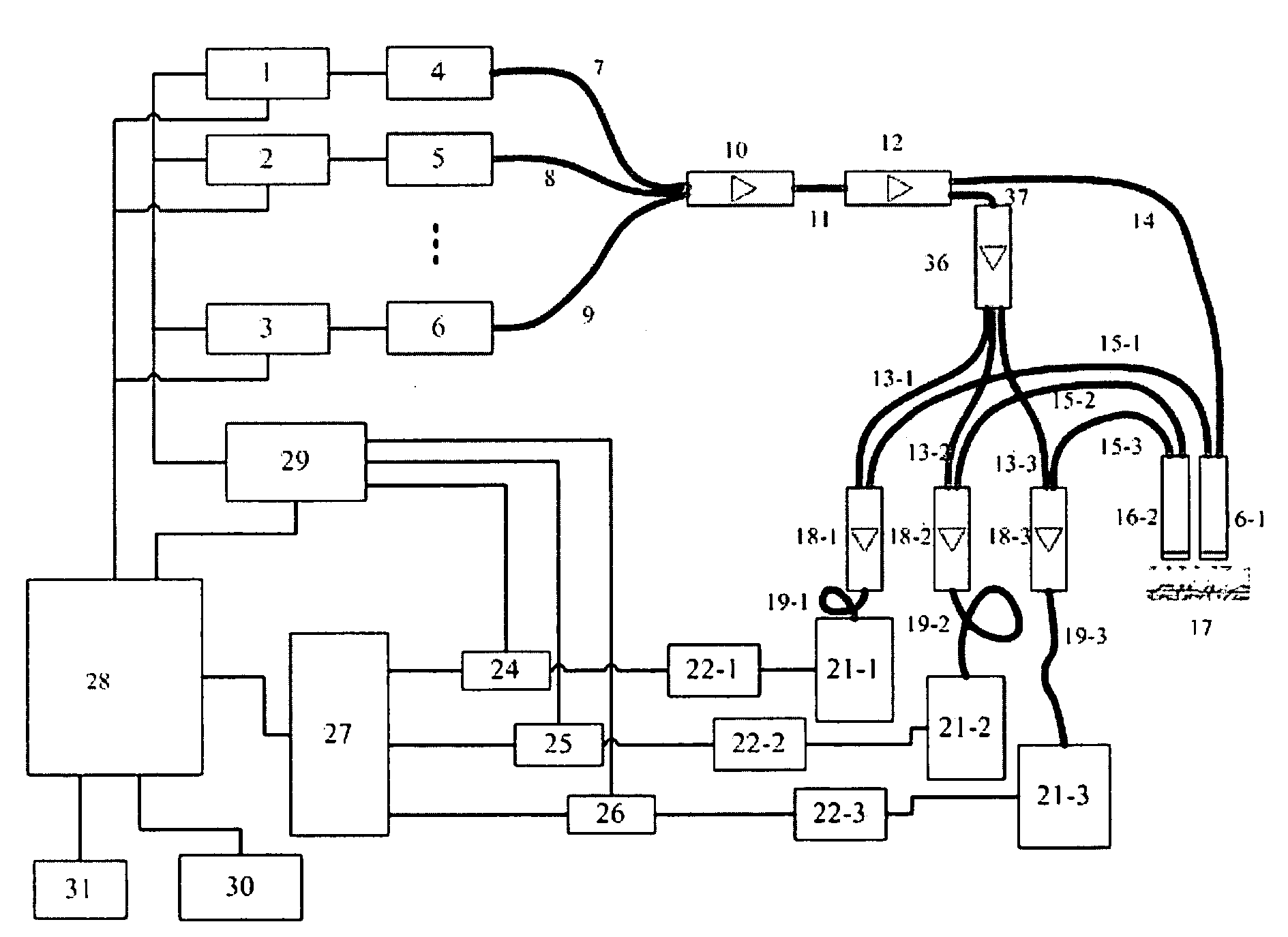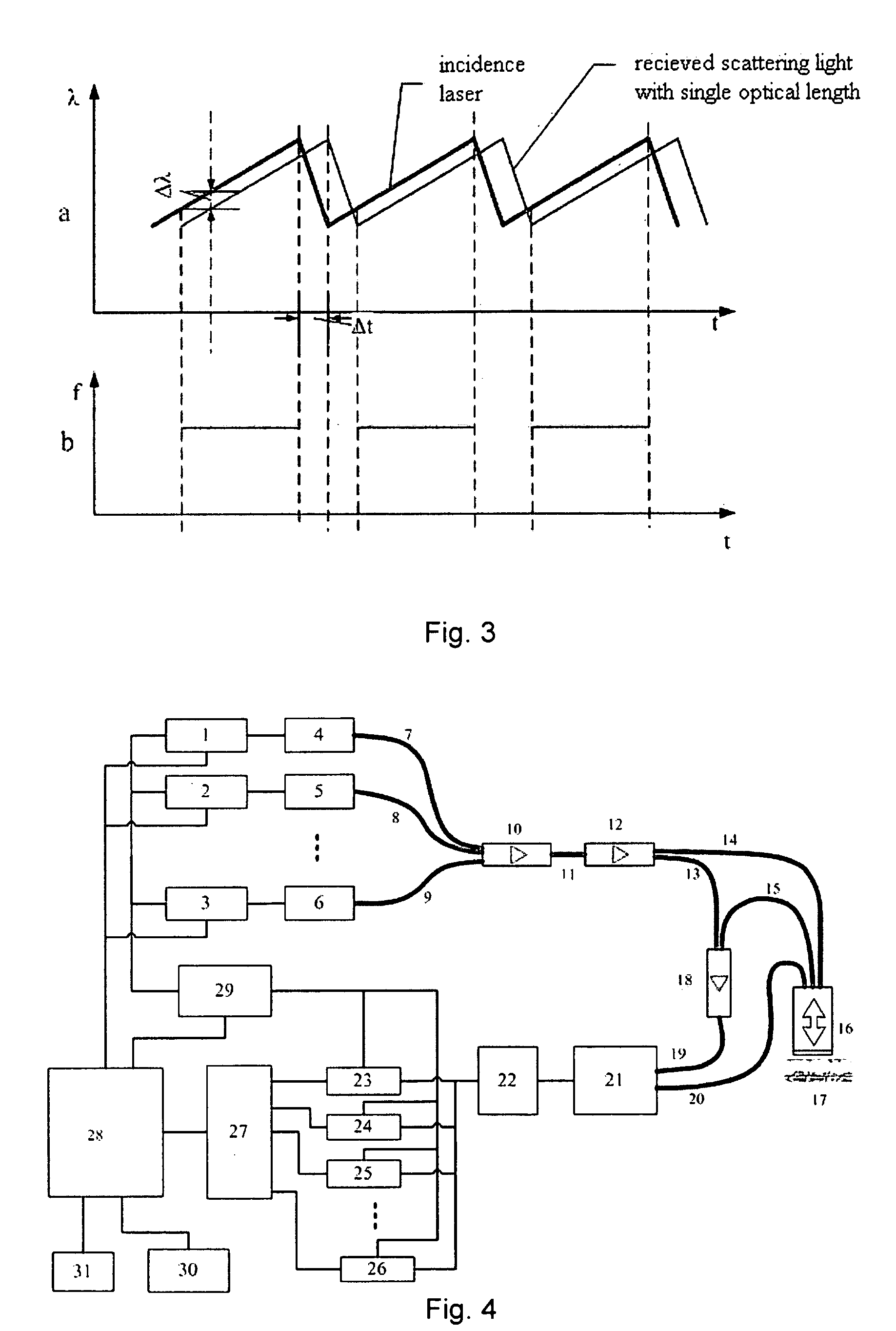Apparatus and method for noninvasive human component measurement with optional optical length
a technology of optical length and human component, which is applied in the field of non-invasive human component measurement with optional optical length, can solve the problems of limiting the on-time and frequent measurement, affecting the detection accuracy, so as to enhance the snr, enhance the detection area, and increase the light intensity
- Summary
- Abstract
- Description
- Claims
- Application Information
AI Technical Summary
Benefits of technology
Problems solved by technology
Method used
Image
Examples
embodiment 1
[0041]Embodiment 1 of the invention is shown in FIG. 4, the system includes a laser driver controller 1, a laser driver controller 2, a laser driver controller 3, a laser source 5, a laser source 6, an interference laser spectrum light path 7, an interference laser spectrum light path 8, an interference laser spectrum light path 9, an interference laser spectrum light path 10, an interference laser spectrum light path 11, an interference laser spectrum light path 12, an interference laser spectrum light path 13, an interference laser spectrum light path 14, an interference laser spectrum light path 15, an interference laser spectrum light path 18, an interference laser spectrum light path 21, a signal processing circuit 22, a signal processing circuit 23, a signal processing circuit 24, a signal processing circuit 25, a signal processing circuit 26, a signal processing circuit 27, a micro computer 28, an optical probe 16, a modulation signal generator 29, a display 30 and a keyboard...
embodiment 2
The Application of a Plurality of Detectors
[0048]Embodiment 2 concerns a human component measurement system with a plurality of detectors as shown in FIG. 6. The 1×2 optical fiber coupler 12 is used to split the light beam into two beams. One of them passes a fiber 37 and then arrives at an optical fiber coupler 36 where the light is separated into three light paths as the reference lights to be transmitted through the fibers 13-1, 13-2, 13-3 to the optical fiber couplers 18-1, 18-2, 18-3. The other one passes a fiber 14 and arrives at a probe 16-1 to be transmitted through an incident laser light path 32 to irradiate the skin tissue. The measurement light collected by the probes 16-1 and 16-2 are transmitted to the optical fiber couplers 18-1, 18-2, 18-3 through fibers 15-1, 15-2, 15-3 so as to be interfered with the reference lights. The beating signal will be received by photoelectric receivers 21-1, 21-2, 21-3 and amplified by preamplifiers 22-1, 22-2, 22-3. A phase locking ampl...
PUM
| Property | Measurement | Unit |
|---|---|---|
| near infrared wavelength | aaaaa | aaaaa |
| wavelength | aaaaa | aaaaa |
| wavelength | aaaaa | aaaaa |
Abstract
Description
Claims
Application Information
 Login to View More
Login to View More - R&D
- Intellectual Property
- Life Sciences
- Materials
- Tech Scout
- Unparalleled Data Quality
- Higher Quality Content
- 60% Fewer Hallucinations
Browse by: Latest US Patents, China's latest patents, Technical Efficacy Thesaurus, Application Domain, Technology Topic, Popular Technical Reports.
© 2025 PatSnap. All rights reserved.Legal|Privacy policy|Modern Slavery Act Transparency Statement|Sitemap|About US| Contact US: help@patsnap.com



